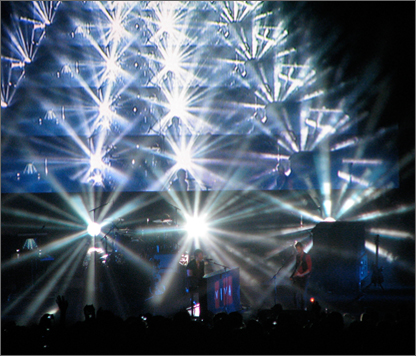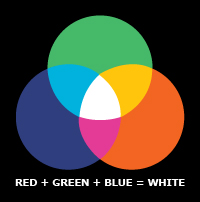
how color lights the stage
Stage lighting creates the visibility and mood of a concert, play, ballet, opera or other performance. It is based on an understanding of how color and light relate to each other.
 Color consists of light waves of varying lengths. When white light shines through a prism, it is broken apart into the colors of the rainbow, or the visible light spectrum. Color from the light spectrum is called additive color because when the primary colors of light — red (R), green (G) and blue (B) — are projected, the area where they overlap “adds up” to white light.
Color consists of light waves of varying lengths. When white light shines through a prism, it is broken apart into the colors of the rainbow, or the visible light spectrum. Color from the light spectrum is called additive color because when the primary colors of light — red (R), green (G) and blue (B) — are projected, the area where they overlap “adds up” to white light.
By shining white light through transparent filters or colored gels, lighting designers vary the intensity, color and movement of light to help direct our eye to certain characters or action taking place on the stage.
PHOTO AND GRAPHIC: KIDS THINK DESIGN



